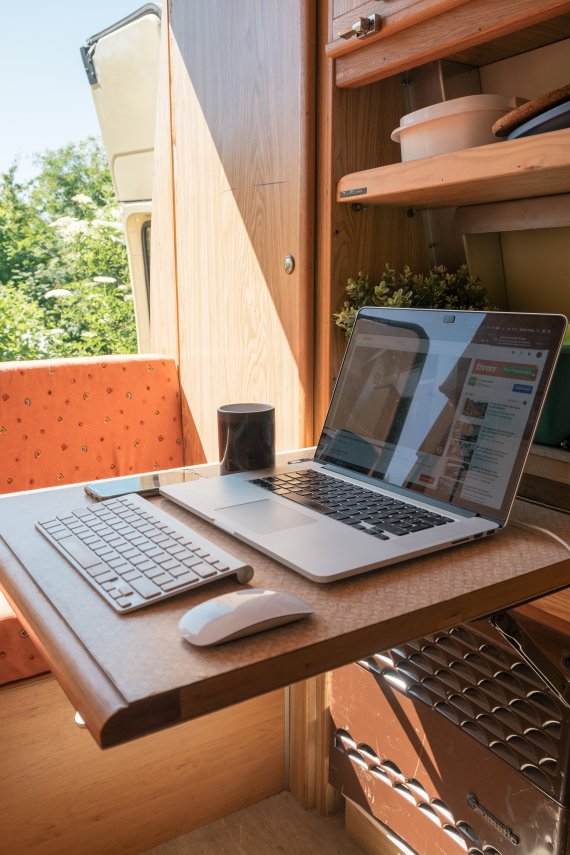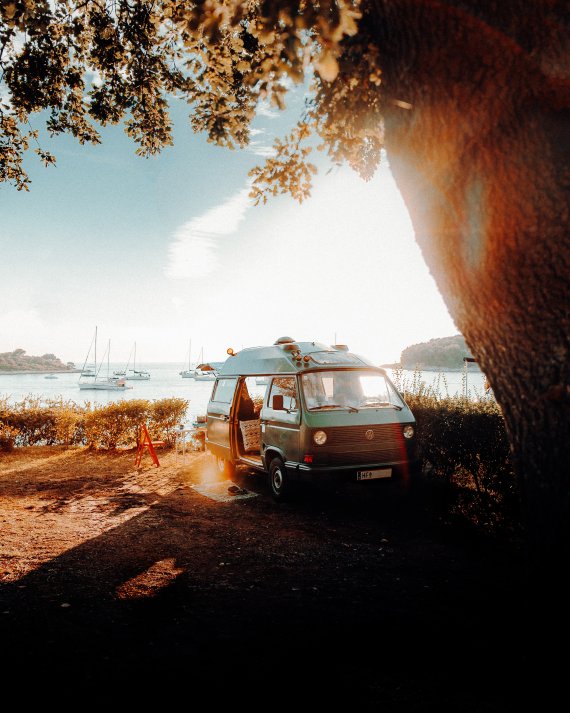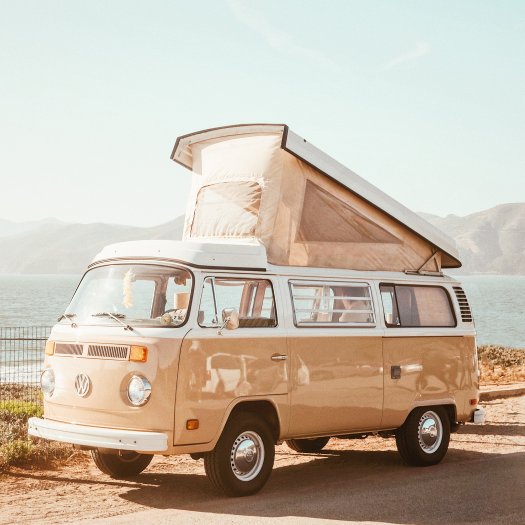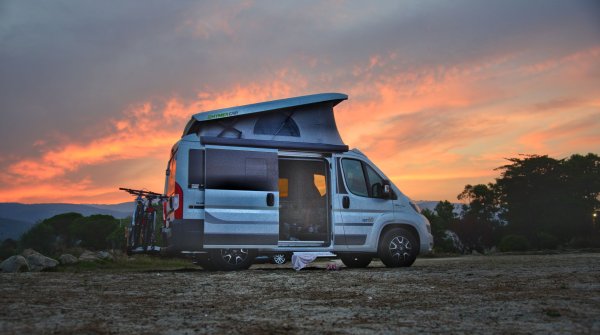Vanlife is possible with any car - it all depends on your own comfort requirements. Commercial vehicles and minibuses such as Volkswagen's Caddy and Bulli or the cheaper alternatives Opel Vivaro or Renault Traffic are particularly suitable. The advantage: minibuses drive like normal cars, usually fit into underground garages and still offer enough space for bed, luggage and kitchenette. If you want to live in a car for a longer period of time and, above all, permanently, you need more space. Fiat Ducato, Ford Transit, Mercedes Sprinter or the Renault Master - they all offer more space than their smaller siblings, but a normal driving licence is sufficient to drive them.

Getting into vanlife is easy - if you have a car, you can get started right away. In the beginning, you have to think about: What do I actually want? Occasional weekend trips, mobile work or even a trip around the world? Accordingly, be sure to expand the car. If you only travel on weekends, you can start with a mattress in the trunk and a camping stove. Mobile working only works with the right power supply. A good start is a power bank for the laptop and an inverter that converts the 12-volt direct current at the cigarette lighter into 230-volt alternating current. This allows you to charge your laptop and co. quickly and easily. Those who are on the road for long periods and stand still a lot need a solar system on the roof and a second car battery.
Restless nights, no shower, bad weather. Even if Instagram and Co. show a different picture: Vanlife is not always nice. If you're thinking about living in a car permanently, you'll have to give up a lot of the comforts you're used to. Therefore: start small, try it out, live in the car for several days on a trial basis and don't quit your apartment and job right away. The best thing to do: rent a camper, drive off, test it. For example, on paulcamper.at you can rent buses from private individuals - fully comprehensive insurance and breakdown cover included.

The Netherlands no, Sweden yes, Germany yes - the laws whether you are allowed to stay overnight in your car or not differ greatly in Europe. While spending the night in the car is generally prohibited in the Netherlands, in Sweden and Norway you are allowed to stay one night (almost) everywhere according to the Everyman's Right. In Germany, too, everyone is allowed to spend the night in the car - but only to restore driving ability and only where parking is allowed according to the StVO. If you want to avoid conflicts, you should not make yourself too homely and, for example, set up camping equipment in front of the vehicle.
Quit your job, move out of your apartment, plan a trip around the world - if you're new to van life, you like to dream big. However, beginners should start small and think carefully about what they need. If you like sports, you don't need a couch in the bus, but enough storage space for your bike, folding boat or ski equipment. If you want to be comfortable and like to cook, focus on a casual seating area and a good stove. The best thing to do is to pack only the most important things in the car at first - mattress and stove - take a test tour first and see what you really need along the way.
A notebook is a must for the trial tour. Then you can diligently note during the trip what is still missing, what is superfluous and what would be nice to have. And then you can start with the expansion at home. Therefore: don't be afraid of empty buses. It's better to do it yourself than to buy a second-hand vehicle that is insufficiently tailored to your needs. On the Internet you can find help with the removal, for example offers selbstmachen.deoffers step-by-step instructions for converting your own camper.
Finally, the car is removed, the trunk is packed full, and the first big trip is on the horizon. Turn the ignition key, put the car in gear, step on the gas. Shortly after the town sign, a red light flashes next to the speedometer. What's going on? If you drive an old car, you're used to it: at the most inopportune moments, the car starts to go haywire. Therefore: Learn to screw. Here, too, the rule is: start small, with the oil change, for example. The autodocs on Youtube show how to do it properly.
If you drive an old T4, you will find the website t4-wiki.dehelpful. Typical T4 problems are described here, including repair instructions and wiring diagrams. Next step: Learn to weld. Because: the first sheet metal is guaranteed to rust through at some point.
 OutDoor by ISPOOutDoor in transition
OutDoor by ISPOOutDoor in transition
- ISPO awards
- Mountain sports
- Bike
- Design
- Retail
- Fitness
- Health
- ISPO Job Market
- ISPO Munich
- ISPO Shanghai
- Running
- Brands
- Sustainability
- Olympia
- OutDoor
- Promotion
- Sports Business
- ISPO Textrends
- Triathlon
- Water sports
- Winter sports
- eSports
- SportsTech
- OutDoor by ISPO
- Heroes
- Transformation
- Sport Fashion
- Urban Culture
- Challenges of a CEO
- Trade fairs
- Sports
- Find the Balance
- Product reviews
- Newsletter Exclusive Area
- Magazine




